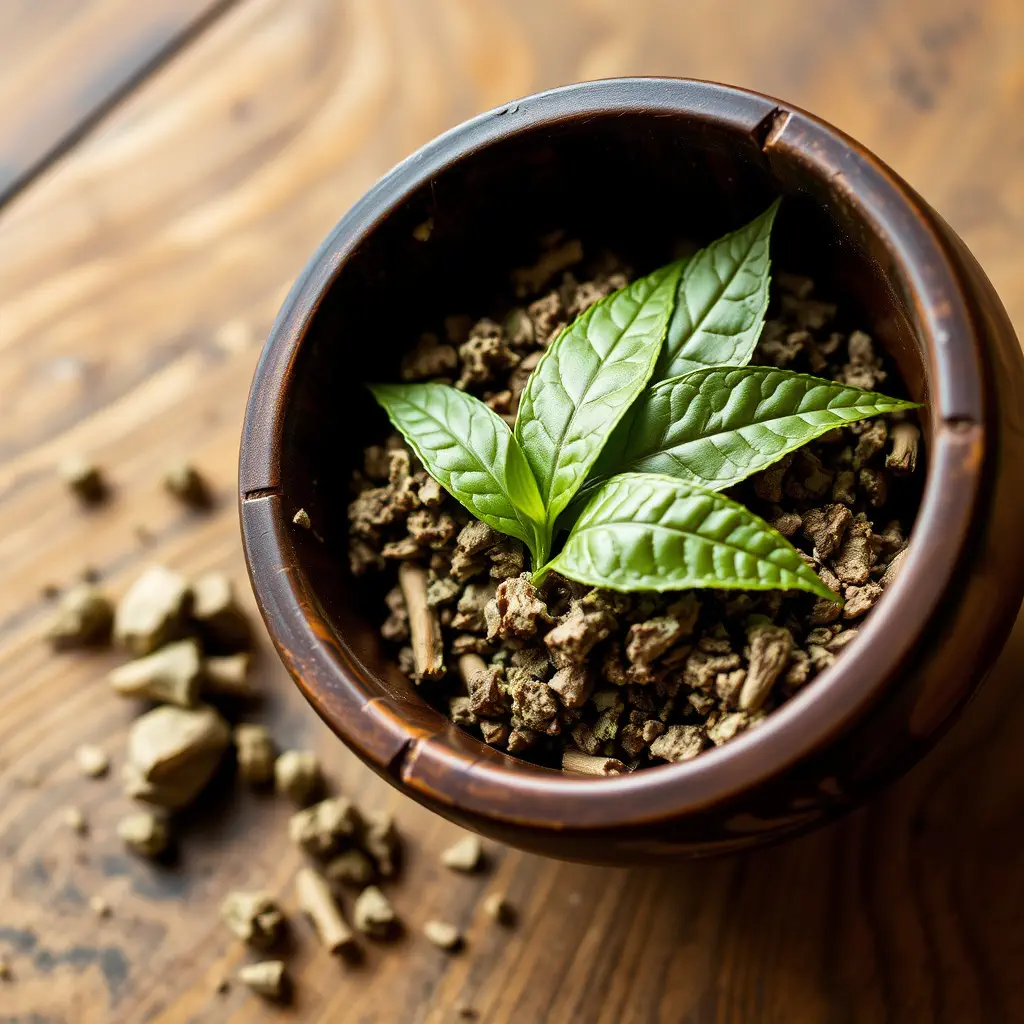Kratom, derived from the Mitragyna speciosa tree, is a natural alternative that has garnered attention for its muscle relaxation properties. The key compounds, mitragynine and 7-hydroxymitragynine, interact with opioid receptors to alleviate pain and promote relaxation. These effects are beneficial for reducing muscle tightness and stress, enhancing overall well-being. However, due to its potency, it's crucial to use kratom cautiously and within safe dosage limits. The legal status varies by region, necessitating users to be aware of local laws and to consult healthcare providers before using it. Kratom can complement a holistic approach to wellness that includes practices like yoga, meditation, and massage therapy, along with proper nutrition, hydration, and sleep for optimal health benefits. Users should be mindful of individual differences in response to kratom and its potential side effects or dependency risks when considering muscle relaxation with kratom as part of their health regimen.
Exploring the intersection of wellness and natural remedies, this article delves into the potential benefits of kratom for achieving muscle relaxation and promoting a state of calmness. We will uncover how kratom can be an integral component in one’s holistic strategy for relaxation, examining its mechanisms and safe integration into daily routines for enhanced tranquility. Join us as we explore ‘muscle relaxation with kratom’ and the science behind this intriguing plant’s effects on the body and mind.
- Unraveling Tension: The Role of Kratom in Muscle Relaxation
- Kratom's Mechanism for Calmness Promotion and Physical Relaxation
- Integrating Kratom into a Holistic Approach to Muscle Relaxation and Tranquility
Unraveling Tension: The Role of Kratom in Muscle Relaxation
Kratom, a tropical evergreen tree native to Southeast Asia, has garnered attention for its potential role in muscle relaxation. The active compounds found in kratom leaves, known as mitragynine and 7-hydroxymitragynine, interact with the body’s opioid receptors, which can alleviate pain and induce a state of calmness. When individuals experience acute or chronic muscular tension, kratom may offer a natural alternative to manage discomfort. Its effects are believed to promote relaxation by modulating neurotransmitter systems within the central nervous system, including those that regulate mood and pain perception. This can lead to a significant reduction in muscle tightness and an overall sense of well-being, making it a compelling option for those seeking muscle relaxation with kratom.
It’s important to approach the use of kratom with caution, as its efficacy and safety profile can vary among individuals. The regulatory status of kratom is complex, with some regions considering it a dietary supplement while others have implemented restrictions due to its opioid-like effects. Users should be aware of the legal considerations and consult with healthcare professionals before incorporating kratom into their wellness routine. Proper dosing and responsible use are crucial for maximizing the benefits of kratom for muscle relaxation without risking adverse side effects or dependency issues.
Kratom's Mechanism for Calmness Promotion and Physical Relaxation
Kratom, a tropical evergreen tree native to Southeast Asia, has been traditionally used for its various medicinal properties. Among these, kratom is recognized for its ability to induce muscle relaxation with kratom and promote a state of calmness. The mechanism behind kratom’s relaxing effects involves its active compounds, mitragynine and 7-hydroxymitragynine. These alkaloids interact with the body’s opioid receptors, particularly the mu-opioid receptors, which are involved in pain perception and emotional regulation. This interaction can lead to a diminished sensation of pain, reduced anxiety, and an overall sense of well-being, contributing to physical relaxation and mental tranquility. Additionally, kratom may modulate the neurotransmitter systems within the brain, such as the dopaminergic and serotonergic pathways, which play a significant role in mood regulation. The precise impact on these systems can lead to an alleviation of stress, promoting a relaxed state both mentally and physically. It’s important for users to approach kratom with caution, as its effects can vary significantly among individuals, and it is subject to regulatory considerations due to its potential for abuse and dependence. Users should seek guidance from healthcare professionals when incorporating kratom into their wellness routines, especially if they have pre-existing health conditions or are taking other medications.
Integrating Kratom into a Holistic Approach to Muscle Relaxation and Tranquility
When exploring natural methods for achieving muscle relaxation and promoting a state of tranquility, kratom has emerged as a significant component within a holistic approach. Kratom, derived from the leaves of Mitragyna speciosa, interacts with the body’s opioid receptors, which can alleviate pain and induce a sense of calm. For individuals seeking a gentler alternative to pharmaceuticals for muscle relaxation with kratom, certain strains such as the red vein varieties are often favored due to their sedative properties. These strains can help ease muscular tension, allowing for deeper relaxation and a reduction in stress-related symptoms. It’s important for potential users to approach kratom with caution, adhering to recommended dosages and consulting healthcare professionals to ensure safety and efficacy. When integrated responsibly into a comprehensive wellness regimen, kratom can be a valuable tool in the pursuit of physical and mental peace.
Incorporating kratom into daily routines for muscle relaxation with kratom should be done thoughtfully, alongside other holistic practices such as yoga, meditation, and massage therapy. These complementary techniques synergize with kratom’s effects, fostering a more balanced and harmonious state of being. Additionally, maintaining a healthy lifestyle with proper nutrition, hydration, and adequate sleep further enhances the benefits of kratom for relaxation. By considering these holistic practices, users can optimize their experience with kratom, ensuring a multifaceted approach to managing muscle stiffness and promoting overall calmness. It’s crucial to remember that individual responses to kratom can vary, and personalized guidance from qualified professionals is essential for the most beneficial outcomes.
In conclusion, the exploration of muscle relaxation with kratom as a means for promoting calmness has revealed a promising avenue for those seeking natural alternatives to manage physical tension. The mechanisms behind kratom’s effects on the body and mind offer a compelling perspective on its role in holistic health practices. By understanding how kratom can be safely integrated into a comprehensive relaxation regimen, individuals may find enhanced tranquility and improved overall well-being. It is clear that further research is warranted to fully elucidate the potential of kratom in this realm, yet the current evidence supports its beneficial role in achieving physical relaxation and mental serenity.






